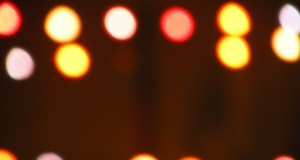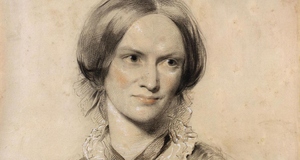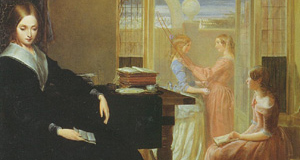Featured Article:Trauma Reenactment in the Gothic Loop: A Study on Structures of Circularity in Gothic FictionNarrative Repetitions in Gothic LiteratureRepetition plays an undeniably distinctive role in Gothic discourse, as it has been noted by several scholars who marked it as one of the most relevant interests of Gothic fiction. DeLamotte refers to repetition as “the major persistent preoccupation of the Gothic” (94), but others, such as Dani Cavallaro, Punter & Byron or Catherine Spooner, also discuss repetition in terms of its powerful presence in Gothic tales. In fact, most recent studies tend to suggest that the Gothic mode is best described not by a list of its diverse individual tendencies or subgenres, but by the all-encompassing term that refers to it as ‘the art of haunting.’ On the other hand, studies on Gothic repetitiveness frequently raise the question of what exactly makes this tendency unique in the case of Gothic discourse as opposed to the wide spectrum of other literary genres where repetitions of certain patterns can just as easily be found as in the Gothic tradition. Speculating on the generically restrictive aspect of Gothic repetition, David Punter and Glennis Byron state that while “repetition is at the heart of all writing,” Gothic forms of repetition are characterized by a “sense of imminent doom,” that is, a sense of predestination whose menacingly haunting presence results in a “specifically Gothic inflection” as it leads to a “foreknowledge of [one’s] own future” (Punter & Glennis 284). That sense of doom can be considered as one of the factors that separate Gothic repetitions from those found in other literary genres. Repetition in the Gothic is presented as a cosmic force, unleashing itself on a preordained line of endlessness. When entering the course of that line, the subject is caught helplessly within a state that continuously reproduces a moment, and obstructs, if only momentarily, the possibility of a future outside of the frame of repetitions. Perhaps the best literary instances of such endless loops are ghost stories in which the specter is suffering from a kind of ghostly repetition compulsion, a nightly reenactment of the past trauma that resulted in his or her unwilling post-presence in the world of the living. However, one might also consider the looping pattern that characterizes the first archetype of the literary Gothic, Walpole’s The Castle of Otranto. In Walpole’s tale Manfred’s every potential step towards his goals is sabotaged by the compulsive reappearance of late ancestors. Manfred’s false claim to the castle is destined to fail, from the very beginning, because of the unwritten, cosmic laws of inheritance that deny him the right to own a wrongly acquired possession. Similarly to other tales, in Otranto the past claims its voice within the present and demands a return to ancient matters in exchange for a possible, but continuously withheld entering into the future.Often compared with Gothic literature are fairy tales and folk tales whose structural similarities carry a potential of being assimilated into the archetypal Gothic narrative. As opposed to these genres however, where the repetitive pattern usually serves as the main progressive factor of the narrative, the Gothic loop tends to pull its subject back to a seemingly static, binding position. By doing so, it creates a state of suspense, or, in some cases, a form of tiresome progress so frustrating that its representation often involves the image of temporal, physical or intellectual imprisonment. The result of this sense of not going forward is that which DeLamotte in one of her analyses refers to as the “double terror of boundedness and boundlessness, claustrophobia and vertigo” (DeLamotte 95), that is, the frightening realization of being trapped in a series of never-ending circles. The Gothic narrative is, at its heart, a narrative of breaking the infinite cycle: a desperate attempt on the part of the protagonist to escape from the loop. In her analysis DeLamotte examines the controversial effect of “boundedness and boundlessness” in terms of its architectural representations within Gothic narratives, but later she also defines that double terror as a particular state of mind expressed both spatially and temporally in Gothic writing. She explains the difference between architectural and non-architectural depictions of Gothic repetition through the following passages: Much of the feeling of claustrophobia derives from this sense of infinity: the sense that one will never come to an ultimate boundary dividing this place from some other place. Through other kinds of repetition, nonarchitectural Gothic romances … render the double terror of boundedness and boundlessness as a state of mind. They describe the anxiety of the obsessed wanderer, lost in the universe, but trapped by ‘a sense of … universal persecution’ (Montorio 2: 282). (DeLamotte 95) DeLamotte identifies a second, generically restrictive, nature of Gothic repetitions, namely, their extreme quality which differentiates them from other kinds of repetitive structures. As she says, “the repetition of the Gothic romance is not merely that of an adventurer in transit from one peril to another, but of life in extremis. There is a sense of excess and hysteria, of events escaping from their ordinary temporal bounds” (DeLamotte 94). This idea is partially supported by Morris who places exaggeration and repetition side by side as the “two dominant figures of speech which shape Walpole’s narrative in The Castle of Otranto” (Morris 302). Morris’s suggestion is to link the extremity of the Gothic mode to its aspirations towards the sublime aesthetic. While Morris does not describe extremity as a quality found in repetitive structures, he nevertheless proposes that repetition and exaggeration both share a key function in the Gothic, that of endowing terror with a further sense of eerie strangeness (Morris 303). A similar tendency of extreme temporal repetitiveness is recognized by Christine Berthin when she states that the Gothic narrative establishes a “distortion of chronology” where “haunting undermines the idea of succession because the ghostly past that inhabits the present taints and blurs its limits” (Berthin 67). In fact, what Berthin adds as a crucial point is that it is exactly this ‘temporal confusion’ in the Gothic that becomes a major threat for the protagonist’s subjectivity. As she claims, subjects caught within this temporal confusion of the Gothic are “haunted and do not belong to themselves. They are not contemporary with themselves, and perform actions that only make sense beyond the frame of the present where they find themselves ungrounded” (Berthin 67). While highlighting certain key features of Gothic repetition, these descriptions also suggest that the temporal loop and the repeated events it contains may be held responsible for many of the characteristically generic features of Gothic writing, including its destabilizing effects on subjectivity, its produced sense of prisonlike, claustrophobic enclosure and its reliance on fear arising from terror. What differentiates the Gothic loop from other narrative structures based on repetitions, such as successive stages, is its tendency to insist on a certain moment, a state of suspense as opposed to promoting future progress. The Gothic loop is not a tool of progress, but that of anti-progress, and what it presents are not mere obstacles in the way of succession, but déjà vu-like events that, on the one hand, prevent the arrival of the future, and on the other hand, evoke the impression that whatever is happening at a particular moment of the narrative is not simply ‘happening,’ but ‘happening again.’ To break the cycle, the subject is forced to return to the space and time marked by crisis, most commonly a personal disaster that proves to be highly influential on the subject’s present identity. The last and perhaps most interesting generic aspect of the Gothic loop is its organic, perhaps even grotesque nature. The Gothic loop—regardless of whether the narrative works with only one or with several loops—is a site of various transformations, but it itself can also be subject to transformation as the tale evolves. Such a transformation is especially likely to emerge once, within the Gothic tale, the subject engages in any kind of an escape plan to subvert the trancelike trap of endless repetitions. The Gothic loop often turns tighter as the narrative approaches its final resolution, and it also presents new and gradually worsening challenges to its subject. That is how the Gothic loop, although functioning as an “anticlockwise” mechanism (Berthin 67), is actually producing some sort of a progress, which, however, is hardly ever perceived as progress due to the inclination of the Gothic tale towards constant returns. One scholar whose overall definition of the Gothic as a literary as well as cultural discourse is centered around the idea of what could be called ‘transformative self-repetition’ is Catherine Spooner. Her proposal is to consider the notion of constant revival as one of the most central and inherent characteristics of Gothic discourse, metaphorically comparing the Gothic tradition and its seemingly self-revisionary historical phases to the living-dead creatures it produces (Spooner 11). Spooner’s account also marks the notion of transformation within the line of generic repetitions as a crucial factor so that in her analysis the successive loops of Gothic literature are seen not as identical copies of one another, but as revised and readapted versions of their earlier states. “The notion of revival,” as defined by Spooner, “can be seen to imply a reappropriation and reinvention of previous forms rather than a straightforward repetition” (11). While at this point Spooner does not extend her analysis of revival to the works themselves, she nevertheless identifies that generic tendency of successive rise-and-fall—similar in effect to the Gothic loop—as perhaps the most relevant structural element of Gothic fiction.Continued on Next Page » Suggested Reading from Inquiries Journal
Inquiries Journal provides undergraduate and graduate students around the world a platform for the wide dissemination of academic work over a range of core disciplines. Representing the work of students from hundreds of institutions around the globe, Inquiries Journal's large database of academic articles is completely free. Learn more | Blog | Submit Latest in Literature |


















